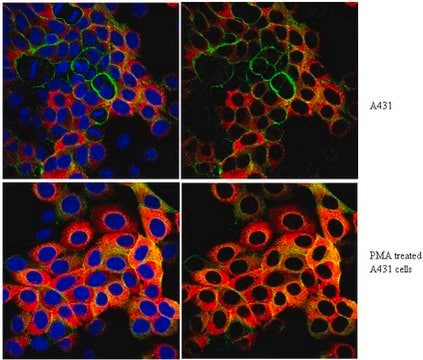217721
RO-3306
≥95% (HPLC), liquid, Cdk1 inhibitor, Calbiochem®
Sinónimos:
InSolution Cdk1 Inhibitor IV, RO-3306, 5-(6-Quinolinylmethylene)-2-((2-thienylmethyl)amino)-4(5H)-thiazolone, 5-(Quinolin-6-ylmethylene)-2-(thiophen-2-ylmethylamino)thiazol-4(5H)-one, 5-(Quinolin-6-ylmethylene)-2-(thiophen-2-ylmethylamino)thiazol-4(5H)-one, 5-(6-Quinolinylmethylene)-2-((2-thienylmethyl)amino)-4(5H)-thiazolone
About This Item
Productos recomendados
product name
Cdk1 Inhibitor IV, RO-3306, InSolution, ≥95%
Quality Level
assay
≥95% (HPLC)
form
liquid
manufacturer/tradename
Calbiochem®
storage condition
OK to freeze
avoid repeated freeze/thaw cycles
desiccated (hygroscopic)
protect from light
shipped in
dry ice
storage temp.
−70°C
General description
Biochem/physiol Actions
Cdk1/B1 and Cdk1/A
Cdk2/E, PKCδ, and SGK
Packaging
Warning
Physical form
Reconstitution
Other Notes
Legal Information
Storage Class
10 - Combustible liquids
wgk_germany
WGK 2
flash_point_f
188.6 °F - closed cup - (refers to pure substance)
flash_point_c
87 °C - closed cup - (refers to pure substance)
Certificados de análisis (COA)
Busque Certificados de análisis (COA) introduciendo el número de lote del producto. Los números de lote se encuentran en la etiqueta del producto después de las palabras «Lot» o «Batch»
¿Ya tiene este producto?
Encuentre la documentación para los productos que ha comprado recientemente en la Biblioteca de documentos.
Nuestro equipo de científicos tiene experiencia en todas las áreas de investigación: Ciencias de la vida, Ciencia de los materiales, Síntesis química, Cromatografía, Analítica y muchas otras.
Póngase en contacto con el Servicio técnico








